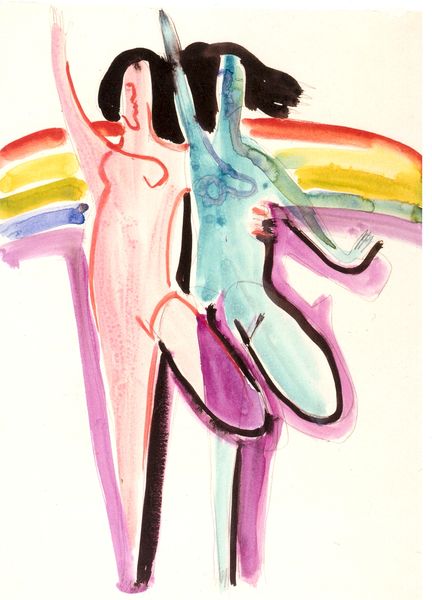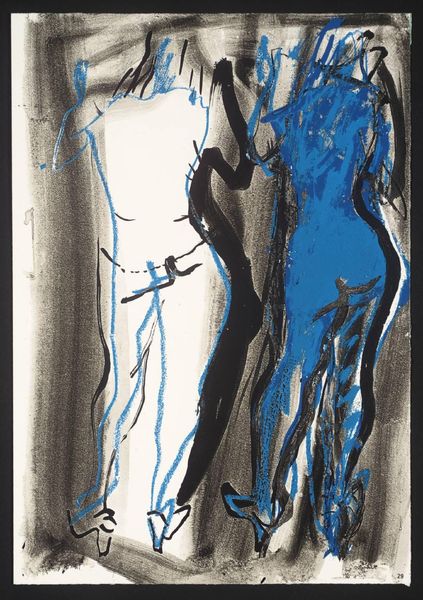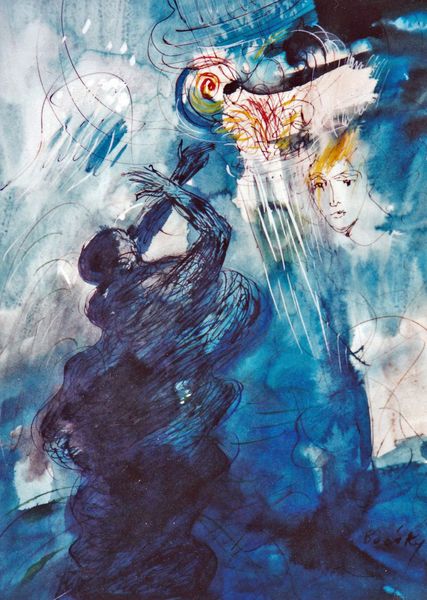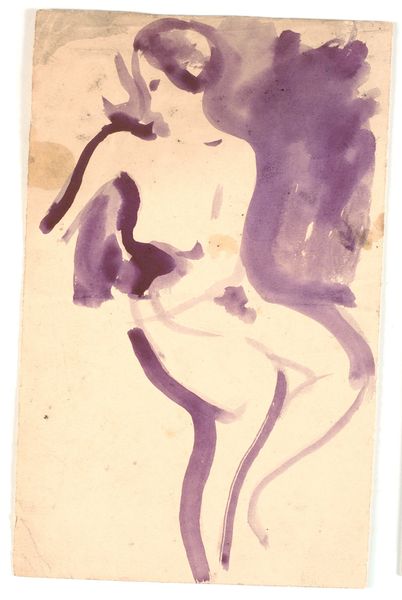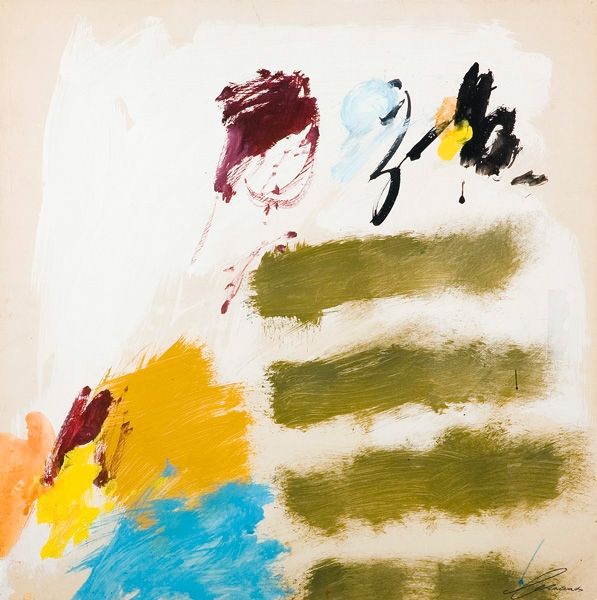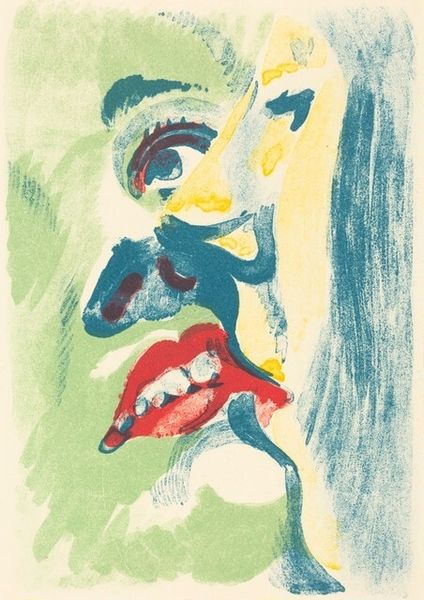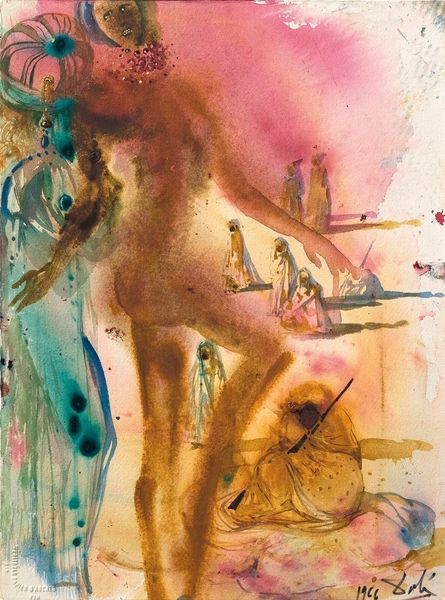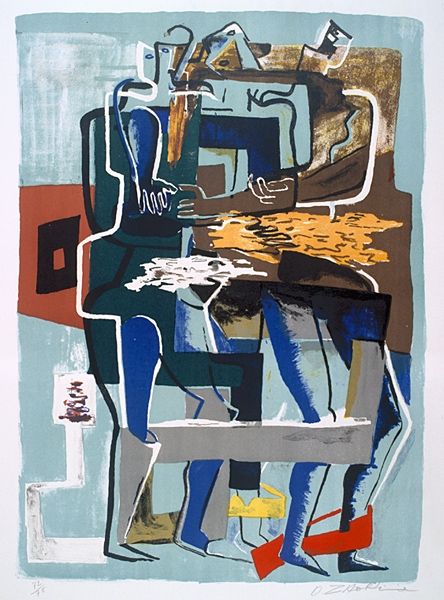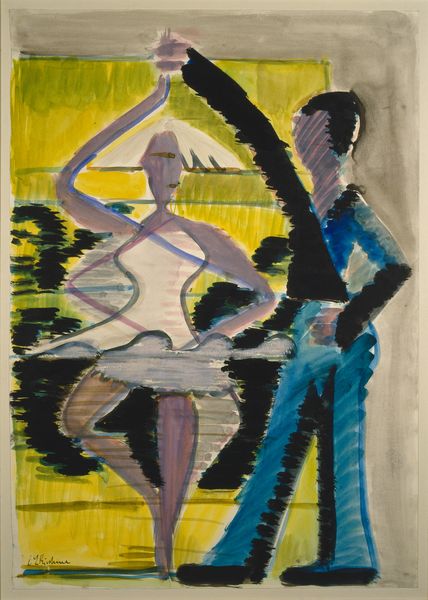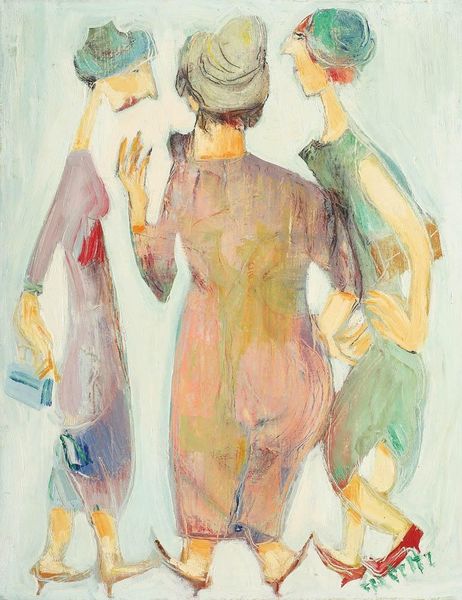
Dimensions: 51.5 x 36.2 cm
Copyright: Public domain
Editor: Here we have Ernst Ludwig Kirchner’s "Dancing Couple," a watercolour illustration from 1933. There’s an almost frantic energy to it, the figures seem to blur and merge together. What do you make of this piece, especially given the context of its time? Curator: This piece offers a striking look into the anxieties of interwar Europe. Kirchner, associated with the Expressionist group Die Brücke, was deeply affected by the political and social upheavals of his time. Note how the energetic brushstrokes and dissolving forms might reflect the instability of Weimar Germany and the rising threat of Nazism. Editor: So the seemingly frantic energy might be a reflection of wider societal unease? Curator: Precisely. Kirchner’s work often grappled with the alienation and psychological fragmentation he witnessed. Think about how his style, developed during the pre-war boom years with a celebration of bustling street scenes, shifts in the 1930s, reflecting a darkening mood. Does this looser style tell a similar story, or do you see other possible motivations at play? Editor: That’s a fascinating point. It feels like the chaos on the rise may have led to Kirchner not knowing exactly what to focus on. Is the work more impactful because of the social tension at the time? Curator: Yes, the personal and the political were deeply intertwined for Expressionists like Kirchner. His art became a site of resistance, even if subtly, against the forces that sought to suppress individuality and freedom of expression. He became one of the first casualties of what he was afraid of in a lot of respects. Editor: I see it now, thanks so much! Curator: Absolutely! Thinking about art as a product and reflection of its socio-political context can unlock new ways to interpret it.
Comments
No comments
Be the first to comment and join the conversation on the ultimate creative platform.

